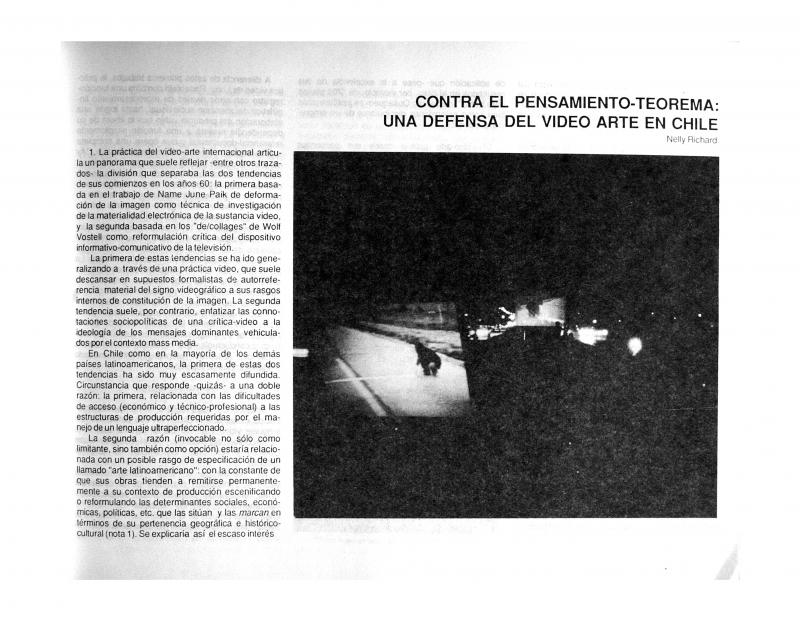“La función del video” (1980) was written by members of the C.A.D.A. (Colectivo Acciones de Arte), a group that was active during the height of the military dictatorship in Chile. The text explains how they used video in their work and how it was circulated from hand to hand. C.A.D.A. members included Lotty Rosenfeld (1943–2020) and Diamela Eltit (b. 1949), a writer; the artist Juan Castillo (b. 1952); the sociologist Fernando Balcells (b. 1950); and the poet Raúl Zurita (b. 1950). The group used the city of Santiago and its art spaces as supports or backdrops for their works. Their first project was Para no morir de hambre en el arte (1979), which involved several simultaneous components consisting of actions staged: in a working-class neighborhood in Santiago, outside of the United Nations building, at the Galería de Arte Centro Imagen, and in an insert that referenced the action in HOY magazine. The group also invited other artists to take part in the project. This concept of multiple actions helped to launch a program of group works staged in different locations (institutional or not) and performed according to a range of different strategies.
This document describes the basic process involved in the group’s way of “making art,” which meant recording their actions to use in later works of video art about the event. Some of those were Para no morir de hambre en el arte; Inversión de Escena, about the intervention at the Museo Nacional de Bellas Artes while some milk delivery trucks drove around the city; ¡Ay Sudamérica!, a project that had six light aircraft flying over Santiago to drop 400,000 leaflets; and No +, a call to scribble this slogan on walls all over Santiago in a clear, open message to the dictatorship. Members of the group used this same process of blending video and work in their individual projects.
Video became increasingly important in the cultural field during the 1980s. It was used for documentary purposes, to tell stories, and as a tool with which to experiment in the visual arts. The Festivales Franco-Chilenos de Videoarte gained international attention as a place where all three kinds of video could be shown and discussed by their respective practitioners. [For more information on this subject see the following in the ICAA Digital Archive: “Contra el pensamiento teorema: Una defensa del video” (doc. no. 748696) by Nelly Richard.]

